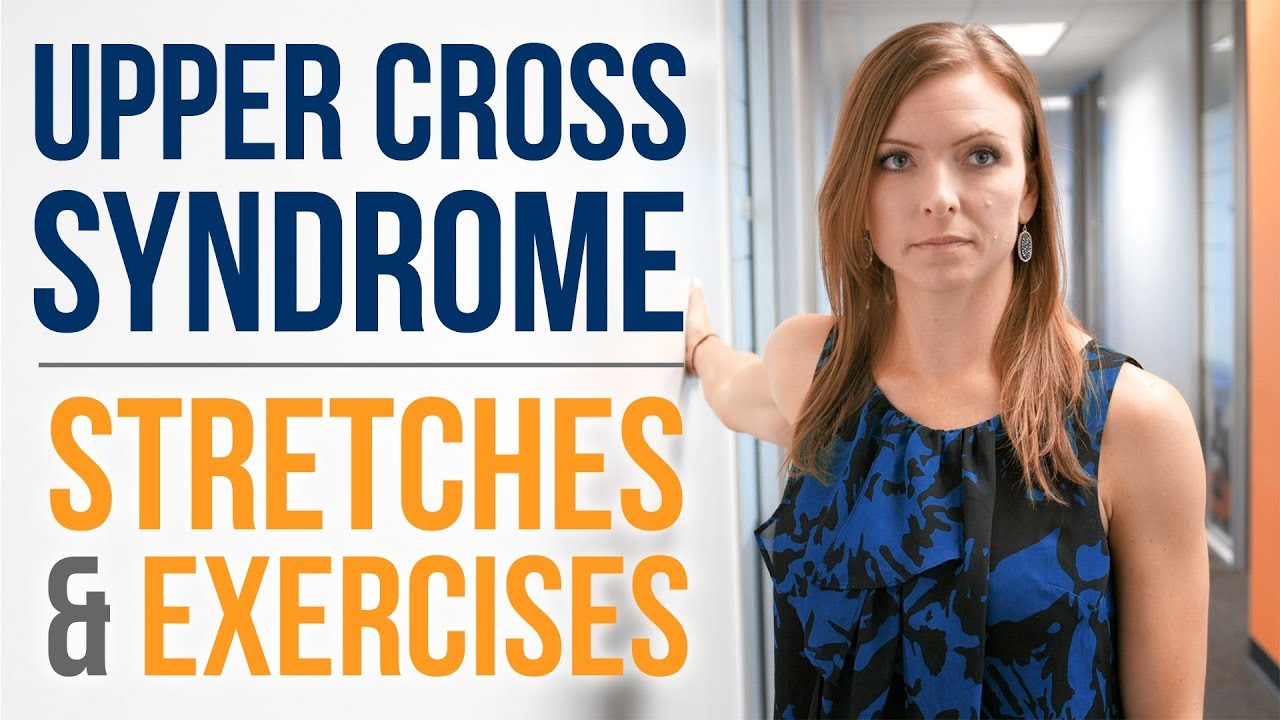Upper Cross Syndrome Causes, Symptoms, and Solutions
In the digital age, where screens dominate our daily lives, the consequences of poor posture have become increasingly prevalent. Upper Cross Syndrome, a condition related to posture, is now a significant concern. In this article, we will delve into the intricacies of Upper Cross Syndrome, understanding its causes, symptoms, and the importance of addressing this issue.
Understanding the Anatomy of Upper Cross Syndrome
To comprehend Upper Cross Syndrome fully, it’s essential to grasp the underlying anatomy involved. This section will explore the intricate network of muscles and structures affected by poor posture. By understanding the mechanics, you’ll gain insights into how Upper Cross Syndrome impacts your body.

Causes and Risk Factors
Upper Cross Syndrome isn’t an overnight occurrence; it develops over time due to specific causes and risk factors. We’ll uncover the common culprits behind this condition, such as prolonged screen time, desk jobs, and sedentary lifestyles. By identifying these factors, you can take proactive steps to mitigate your risk.
Signs and Symptoms
Recognizing the signs and symptoms of Upper Cross Syndrome is crucial for early intervention and effective management. In this section, we will detail the typical indicators, including neck pain, shoulder tightness, and forward head posture. Understanding these symptoms will help you identify if you are at risk.
Diagnosis and Assessment
Seeking professional guidance is essential if you suspect Upper Cross Syndrome. Here, we will explain how healthcare professionals diagnose and assess the condition. We’ll also discuss the importance of a thorough evaluation to tailor an appropriate treatment plan.
Treatment and Management
Reversing the effects of Upper Cross Syndrome requires a multifaceted approach. This section will cover various treatment options and management strategies, including physical therapy exercises, chiropractic care, and ergonomic adjustments. We’ll empower you with practical steps to address the condition effectively.
Preventing Upper Cross Syndrome
Prevention is often the best course of action when it comes to Upper Cross Syndrome. In this section, we will provide practical guidance on how to prevent the condition from developing in the first place. We’ll discuss posture awareness, ergonomics, and exercises that can help maintain good posture.
Living with Upper Cross Syndrome
For those already dealing with Upper Cross Syndrome, managing the condition is vital for a better quality of life. This part of the article will offer insights into living with the condition. We’ll share tips for minimizing discomfort, maintaining an active lifestyle, and seeking ongoing care.
Frequently Asked Questions (FAQs) About Upper Cross Syndrome
1. What is Upper Cross Syndrome (UCS)?
Upper Cross Syndrome (UCS) is a postural condition characterized by muscle imbalances in the neck, shoulders, and upper back. It typically involves tightness in some muscles and weakness in others, leading to poor posture.
2. What are the common signs of Upper Cross Syndrome?
Common signs of UCS include forward head posture, rounded shoulders, neck pain, upper back pain, and muscle tightness in the chest and neck.
3. What causes Upper Cross Syndrome?
UCS is often caused by prolonged periods of poor posture, such as hunching over a computer or phone. It can also result from muscular imbalances and overuse of certain muscles.
4. How is Upper Cross Syndrome diagnosed?
A healthcare professional, such as a physical therapist or chiropractor, can diagnose UCS through a physical examination and assessment of posture and muscle imbalances.
5. Can Upper Cross Syndrome be reversed?
Yes, with the right treatment and exercises, UCS can often be reversed or significantly improved. Proper posture correction and strengthening exercises play a crucial role in the recovery process.
6. What are some exercises to help with Upper Cross Syndrome?
Effective exercises include chin tucks, scapular retractions, and stretches to alleviate muscle tightness. A healthcare professional can provide a tailored exercise plan.
7. How can I prevent Upper Cross Syndrome?
Preventing UCS involves maintaining good posture, taking breaks from prolonged sitting, and incorporating regular posture-awareness exercises into your routine.
8. Is Upper Cross Syndrome associated with pain?
Yes, UCS can lead to pain and discomfort in the neck, shoulders, and upper back. Prompt treatment and posture correction can alleviate these symptoms.
9. Can Upper Cross Syndrome affect daily activities?
Yes, UCS can impact daily activities and overall quality of life. It may limit the range of motion and cause discomfort during tasks like lifting, working, or exercising.
10. When should I seek professional help for Upper Cross Syndrome?
It’s advisable to seek professional help if you experience persistent pain, discomfort, or posture-related issues. A healthcare provider can assess your condition and recommend appropriate treatment.
Conclusion:
In conclusion, achieving and maintaining good posture is not merely a matter of aesthetics but a fundamental aspect of overall health and well-being. We’ve explored Upper Cross Syndrome from its roots to its management, empowering you to make informed decisions and prioritize your posture for a healthier, pain-free life.




